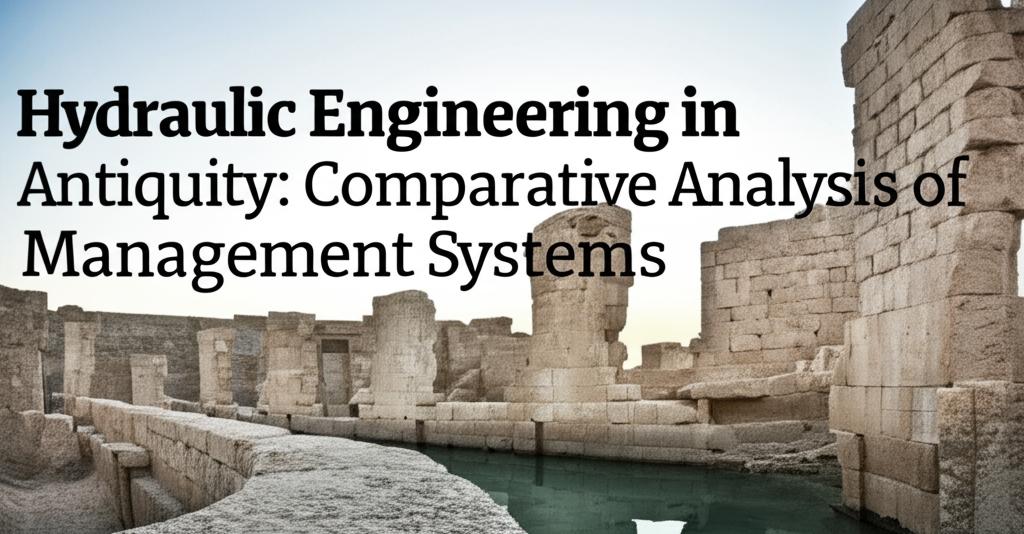Ancient civilizations, despite their technological limitations by modern standards, demonstrated remarkable ingenuity in hydraulic engineering. Their ability to manage water resources was crucial for agriculture, sanitation, and daily life. A comparative look at these systems reveals both shared challenges and diverse solutions shaped by local geography and societal needs.
Roman Engineering: Aqueducts and SanitationThe Roman Empire is renowned for its extensive aqueducts, sewerage systems, and public baths. Roman engineers mastered the use of gravity to transport water over vast distances, often through challenging terrains. Aqueducts, built with meticulous precision using arches and tunnels, supplied cities with fresh water for drinking, bathing, and irrigation. The Cloaca Maxima in Rome, initially an open drain and later a covered sewer, stands as a testament to their advanced understanding of urban sanitation. Roman water laws also regulated usage and protected water sources, highlighting an early form of water resource management. Their systems emphasized centralized control and large-scale infrastructure projects.
Mesopotamian Innovation: Canals and IrrigationIn the fertile crescent between the Tigris and Euphrates rivers, Mesopotamian civilizations like the Sumerians and Babylonians developed sophisticated irrigation systems as early as the 4th millennium BCE. They constructed intricate networks of canals to divert river water to their fields, transforming arid landscapes into productive agricultural zones. These systems required significant labor for construction and continuous maintenance to prevent silting and salinization. Mesopotamian societies developed complex administrative structures to manage these canal networks, reflecting the societal importance of water control. Their approach was characterized by extensive, gravity-fed canal systems tailored to floodplain agriculture.
Egyptian Nile Dependency: Basin Irrigation and NilometersAncient Egypt owed its existence to the Nile River. Egyptian hydraulic engineering focused on harnessing the river's annual floods. They developed basin irrigation, a system where floodwaters were diverted into large, diked agricultural plots. As the floodwaters receded, they left behind fertile silt, and the trapped water sustained crops. Nilometers, structures built along the river to measure water levels, were crucial for predicting the flood's magnitude, which directly impacted agricultural yields and taxation. Egyptian water management was thus closely tied to the natural rhythms of the Nile and featured less permanent, large-scale diversion structures compared to the Romans or Mesopotamians, focusing instead on managing an annual inundation.
Indus Valley Civilization: Urban Planning and Water FeaturesThe cities of the Indus Valley Civilization, such as Mohenjo-Daro and Harappa (around 2600-1900 BCE), exhibited remarkable urban planning, which included advanced water management. Many houses had private wells and bathing platforms connected to covered drains that lined the major streets. The Great Bath at Mohenjo-Daro, a large, watertight public bathing facility, suggests a sophisticated understanding of hydraulic construction and possibly ritualistic uses of water. Their system shows a strong emphasis on urban sanitation and individual access to water, integrated directly into city design.
Minoan and Mycenaean Systems: Cisterns, Dams, and DrainageOn Crete, the Minoans (circa 2700-1450 BCE) developed systems for water supply and drainage. Palaces like Knossos featured terracotta pipes for water distribution and sophisticated drainage systems to manage rainwater and wastewater. They also constructed cisterns to store water. On mainland Greece, the Mycenaeans (circa 1600-1100 BCE) built dams for flood control and water storage, notably the Kofini dam, and developed drainage works for agricultural land reclamation, such as the extensive drainage of Lake Kopais. Their engineering included localized solutions like cisterns and more ambitious projects like dams and land reclamation.
Comparative InsightsWhile all these civilizations faced the fundamental need for water, their approaches differed significantly. Romans focused on long-distance water transport and urban sanitation through engineered structures. Mesopotamians excelled in large-scale irrigation networks to support agriculture in arid river valleys. Egyptians adapted to the Nile's flood cycle with basin irrigation and predictive measurement. The Indus Valley people integrated water supply and sanitation directly into their advanced urban planning. Minoans and Mycenaeans developed localized water storage, distribution, and flood control measures.
Common threads include the critical role of gravity in most systems, the necessity of organized labor and administration for construction and maintenance, and the profound impact of water management on agricultural productivity and urban development. The materials used, such as stone, brick, and terracotta, were locally sourced and skillfully employed.
Studying these ancient hydraulic systems offers valuable lessons in sustainable water management and adaptation to environmental conditions. Despite the passage of millennia, the ingenuity displayed in harnessing and managing water remains a source of inspiration and a testament to the foundational role of hydraulic engineering in the development of human civilization.

